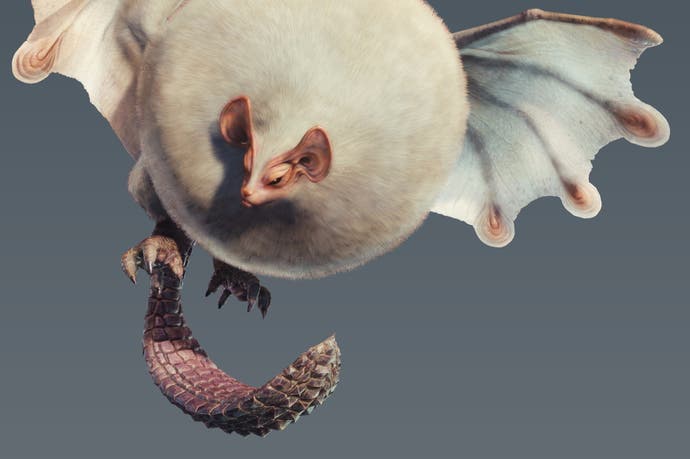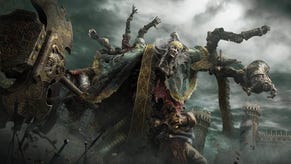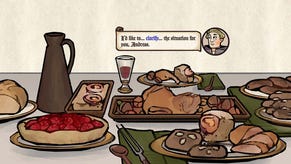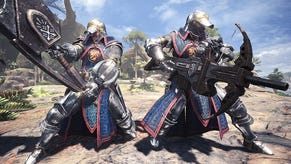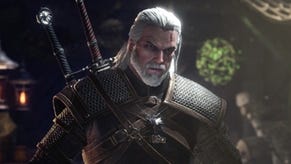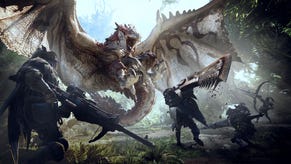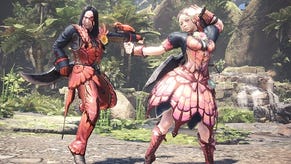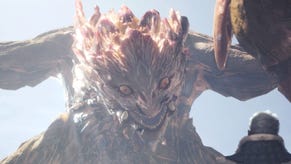How a hamster and a vacuum cleaner combined for Monster Hunter World's best new beast
Making a Monster.
I've got my own particular tale about a hamster and a vacuum cleaner, but it's probably for the best I don't share it here (I was eight years old, me and my friend were very stupid and it's not something I'd ever do again. The hamster lived, though). This tale's a bit more savoury, and it's about Monster Hunter World's best new beast.
It's called the Paolumu, and it's just about the greatest thing I've seen in Monster Hunter World so far. A flying wyvern that stalks the Coral Highlands, it's half hamster, half bat and 100 per cent nuts - and exactly the kind of far-fetched creation that makes me hold Capcom's long-running series dear.
During a recent trip to Capcom's headquarters in Osaka, I got the chance to sit down with art director Kaname Fujioka, lead artist Sayaka Kembe and sound director Hideki Hosoi to talk about how exactly Capcom goes about making its monsters - and discovered the lengths they go to in their creations.
Kaname Fujioka: Well, it all started with the basic design concept of the Coral Highlands area. It's notable for having these rising air currents, and the basic idea is thinking what kind of monsters would live there - what kind of monsters would utilise these air currents that are moving around. That's where the basic idea of Paolumu came from. That's the game design concept, from the game planners.
So we had this idea of a floating, flying monster - but not just floating and flying, being airborne in a unique way. Not just flapping its wings and floating around. From that, that basic design concept, we also got a request from the designers for it to be this middle class monster - a medium strength monster, not too weak and not too strong. That was also part of the concept.
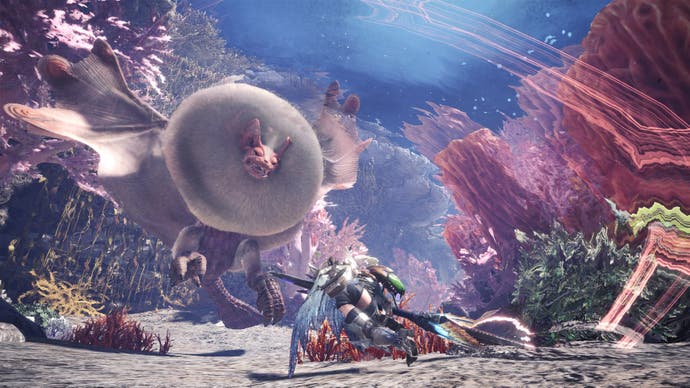
Sayaka Kenbe: In the beginning we had all sorts of ideas - there might have been duckbills, and even elephant parts as part of the design. But those eventually got filtered out, and we started playing with the idea of what kind of things puff up with air and would make a monster float. Those odd ideas were filtered out in favour of something like a hamster - you know, the idea of it eating food and its cheeks puffing out.
Kaname Fujioka: Eventually we settled on more furry visions of a monster - things like squirrels, things like hamsters. That kind of stuff gets settled on as the design keeps going. Then we also have ideas of what kind of attacks and what kind of behaviours the monster will have - we take those ideas when we're designing the monsters and give them back to the game designers. That's the basic idea for Paolumu!
Sayaka Kenbe: This time around, one of the difficulties wasn't so much in the design but in the implementation and the modelling. For example, keeping its body puffed up while moving around, all the different seamless actions it has, was more difficult than coming up with them. Even simple things like its wings, how it's avoiding hitting its own face. Things like that, they're more difficult to get around technologically speaking, than coming up with the design.

Hideki Hosoi: For the sounds, we do have a basis of real animal sounds - recording those and using those. But even with those, you still have to do something with it. There we start using different prop sounds. For Paolumu, one of the inspirations was the pipes used in old vacuum cleaners. You might not see them so much today - these kind of ridged vacuum pipes, they've got a sound that really fits the monster quite well. We're using these unusual, discomforting sounds with realistic animal sounds, we're mixing these together to create these unique monster sounds.
We have a studio where we do these recordings. We'll take a recording of a small animal, in this case a mouse, and use software to morph that sound into the length that we want for the monster, then we morph it into the vacuum cleaner sound to the tempo that we want - waving that vacuum pipe around in the air, for example.
Kaname Fujioka: The monster design concepts often evolve around other living animals, such as cats and dogs, which are reflected in how the monsters move in the game. One of the things we tried this time around - and it wasn't implemented this way exactly in the final product - we actually used motion capture to have people on-staff mimic the motions and movements of animals when they walk around. We won't use them as they are, specifically, but we'll use them as a reference and combine those with observations and research we've done to get the ideal speed and movement animations that we want. We've got a motion capture studio right here, so it's kind of easy to do. The Great Jagras, that walking animation - that was done using that reference.
This article is based on a press trip to Osaka. Capcom covered travel and accommodation costs.
